Discover SpaceTime with Stuart Gary
SpaceTime with Stuart Gary

SpaceTime with Stuart Gary
Author: Stuart Gary
Subscribed: 8,979Played: 357,215Subscribe
Share
© Copyright bitesz.com
Description
Join host Stuart Gary for weekly explorations into Astronomy, Space, and Science News, featuring insights from 19 years on Australian Public Radio and industry experts.
Become a supporter of this podcast: https://www.spreaker.com/podcast/spacetime-with-stuart-gary--2458531/support.
Become a supporter of this podcast: https://www.spreaker.com/podcast/spacetime-with-stuart-gary--2458531/support.
1000 Episodes
Reverse
(00:00:00) Cosmic Speedsters: Unravelling Our Solar System's Surprising Velocity and Enceladus' Organic Secrets
(00:00:46) Our solar system is moving faster than expected
(00:04:38) Organic molecules discovered erupting from Saturn’s moon Enceladus
(00:08:29) A new satellite launched to study Earth’s oceans
(00:13:49) The Science Report
(00:15:52) Alex on Tech
In this episode of SpaceTime, we uncover groundbreaking insights into Earth's mysteries and the cosmos beyond.Mysterious Structures in Earth's MantleA new study reveals that enigmatic structures within Earth's mantle may hold vital clues about why our planet evolved the conditions necessary for life. These massive formations, known as large low shear velocity provinces and ultra low velocity zones, reside at the boundary between the mantle and outer core, approximately 2,900 kilometres beneath the surface. The research suggests these anomalies could be remnants of Earth's formative processes, providing a deeper understanding of how elements from the core influenced the planet's cooling, volcanic activity, and atmospheric evolution, ultimately setting Earth apart from Venus and Mars.Unprecedented View of the Milky WayAstronomers have achieved a remarkable new perspective of our home galaxy, the Milky Way, with the largest low-frequency radio image ever assembled. This extensive survey, conducted using the Murchison Wide Field Array radio telescope in Western Australia, captures the intricate birth, evolution, and demise of stars across the southern hemisphere. The new image, which boasts double the resolution and tenfold sensitivity compared to previous observations, offers valuable insights into stellar interactions and the cosmic landscape, revealing patterns in star formation and supernova remnants.Successful Return of Stranded TaikonautsIn a significant development, the three Chinese taikonauts stranded in orbit after their Shenzhou 20 spacecraft was struck by space debris have safely returned to Earth aboard the Shenzhou 21 capsule. The crew's return marks the end of a six-month mission at the Tiangong space station, with their extended stay setting a new record for the longest duration in space for Chinese astronauts. The episode highlights the challenges of space travel and the rapid response by Beijing to ensure crew safety.www.spacetimewithstuartgary.com✍️ Episode ReferencesNature GeosciencePublications of the Astronomical Society of AustraliaNew England Journal of MedicineBecome a supporter of this podcast: https://www.spreaker.com/podcast/spacetime-your-guide-to-space-astronomy--2458531/support.
(00:00:00) Cosmic Clues Beneath Us: The Mantle's Role in Life and the Milky Way Unveiled
(00:00:47) Mysterious structures within Earth's mantle may hold clues to life
(00:05:05) A new unprecedented view of the Milky Way Galaxy
(00:12:36) Stranded Chinese taikonauts return safely to Earth
(00:14:21) The Science Report
(00:16:58) Skeptics guide to the return of the haunted doll.
In this episode of SpaceTime, we uncover groundbreaking insights into Earth's mysteries and the cosmos beyond.Mysterious Structures in Earth's MantleA new study reveals that enigmatic structures within Earth's mantle may hold vital clues about why our planet evolved the conditions necessary for life. These massive formations, known as large low shear velocity provinces and ultra low velocity zones, reside at the boundary between the mantle and outer core, approximately 2,900 kilometres beneath the surface. The research suggests these anomalies could be remnants of Earth's formative processes, providing a deeper understanding of how elements from the core influenced the planet's cooling, volcanic activity, and atmospheric evolution, ultimately setting Earth apart from Venus and Mars.Unprecedented View of the Milky WayAstronomers have achieved a remarkable new perspective of our home galaxy, the Milky Way, with the largest low-frequency radio image ever assembled. This extensive survey, conducted using the Murchison Wide Field Array radio telescope in Western Australia, captures the intricate birth, evolution, and demise of stars across the southern hemisphere. The new image, which boasts double the resolution and tenfold sensitivity compared to previous observations, offers valuable insights into stellar interactions and the cosmic landscape, revealing patterns in star formation and supernova remnants.Successful Return of Stranded TaikonautsIn a significant development, the three Chinese taikonauts stranded in orbit after their Shenzhou 20 spacecraft was struck by space debris have safely returned to Earth aboard the Shenzhou 21 capsule. The crew's return marks the end of a six-month mission at the Tiangong space station, with their extended stay setting a new record for the longest duration in space for Chinese astronauts. The episode highlights the challenges of space travel and the rapid response by Beijing to ensure crew safety.www.spacetimewithstuartgary.com✍️ Episode ReferencesNature GeosciencePublications of the Astronomical Society of AustraliaNew England Journal of MedicineBecome a supporter of this podcast: https://www.spreaker.com/podcast/spacetime-your-guide-to-space-astronomy--2458531/support.
(00:00:00) Exploring Mars and Beyond: The Escapade Mission and the Expanding Mysteries of the Pleiades
(00:00:43) NASA's ESCAPADE mission to Mars blasts off
(00:10:00) The Pleiades prove to be far bigger than thought
(00:14:05) Ending the debate over interstellar comet 3I-Atlas
(00:17:05) The Science Report
(00:19:39) Skeptics guide to talking to plants.
In this episode of SpaceTime, we explore the latest advancements in space exploration and cosmic discoveries that deepen our understanding of the universe.NASA's Escapade Mission Launches to MarsNASA has successfully launched its first dual satellite mission to Mars, the Escapade spacecraft, aboard Blue Origin's New Glenn rocket. This innovative mission aims to map the Martian magnetic field and atmosphere in three dimensions, providing crucial insights into how Mars lost its atmosphere and the conditions necessary for future human colonization. The twin probes, named Blue and Gold, will utilize a unique trajectory that allows for flexible launch windows, crucial for future resupply missions to Mars.The Pleiades Star Cluster: A Greater Cosmic StructureNew research has revealed that the Pleiades star cluster is significantly larger than previously thought, forming the core of an expansive stellar complex that spans nearly 2,000 light years. This groundbreaking study combines data from multiple space missions, providing a clearer picture of the Pleiades' origins and its connection to other stellar groups, reshaping our understanding of star formation and migration across the galaxy.Debate Over Interstellar Comet 3I Atlas ContinuesThe ongoing debate regarding the origins of interstellar comet 3I Atlas is addressed, as evidence increasingly supports its classification as a comet rather than an alien spacecraft. This segment explores the comet's characteristics, trajectory, and the scientific explanations behind its unusual features, reaffirming its status as a natural celestial object.www.spacetimewithstuartgary.com✍️ Episode ReferencesAstrophysical JournalNASA ReportsUniversity of California ResearchBecome a supporter of this podcast: https://www.spreaker.com/podcast/spacetime-your-guide-to-space-astronomy--2458531/support.
In this episode of SpaceTime, we delve into remarkable discoveries that illuminate the origins of our planet and the cosmos beyond.Ancient Australian Rocks Shed Light on Earth's OriginsScientists have made significant strides in understanding the formation of Earth and the Moon through the analysis of 3.7 billion-year-old feldspar crystals from the Murchison region in Western Australia. This research reveals that continental growth began relatively late in Earth's history, around three and a half billion years ago, suggesting a shared composition between Earth and the Moon following a colossal impact event. The findings challenge existing theories about the timing of crustal development and provide new insights into the early geological processes that shaped our planet.Hints of a Possible Fifth Force in NatureA groundbreaking report has emerged, suggesting the potential existence of a fifth fundamental force of nature. Researchers have observed unexpected deviations in electron transitions among calcium isotopes, hinting at a new particle, the Yukawa boson. This discovery could reshape the standard model of particle physics and deepen our understanding of the universe's fundamental forces, as scientists continue to explore the mysteries of atomic interactions.Record-Breaking Ocean Waves Observed from SpaceIn an astonishing revelation, satellites have recorded ocean waves reaching heights of nearly 20 metres, the largest ever measured from space. This episode explores how these massive waves, driven by storms, can carry destructive energy across vast distances, impacting coastlines far from the storm's origin. The findings not only validate existing wave models but also reveal new insights into the energy dynamics of ocean swells.www.spacetimewithstuartgary.com✍️ Episode ReferencesNature CommunicationsPhysical Review LettersProceedings of the National Academy of SciencesBecome a supporter of this podcast: https://www.spreaker.com/podcast/spacetime-your-guide-to-space-astronomy--2458531/support.
In this episode of SpaceTime, we explore the latest astronomical phenomena and significant discoveries that are shaping our understanding of Earth and space.Auroral Displays Light Up the SkiesPlanet Earth has been treated to an extraordinary display of auroras, with both the Aurora Australis and Aurora Borealis lighting up the skies following three powerful X-class solar flares, including an X 5.1 event on November 11. This segment dives into the mechanics behind these solar flares, the resulting coronal mass ejections (CMEs), and how they triggered spectacular auroras visible at lower latitudes than usual, including sightings as far north as Cairns and even Florida.Largest Modern Impact Crater DiscoveredScientists have uncovered what is believed to be the largest modern impact crater on Earth, the 900-metre-wide Jinling Crater in southern China. This well-preserved structure, dating back to the Holocene epoch, offers new insights into extraterrestrial impacts and their effects on our planet. The discovery challenges previous assumptions about the frequency and scale of impacts from small celestial bodies and highlights the importance of studying such geological features.Nasa's Key Communications Dish Out of ServiceIn a significant setback for NASA, the 70-metre Goldstone deep space communications dish has been rendered inoperable due to an accident that occurred in September. The incident has raised concerns about the strain on NASA's Deep Space Network, especially with upcoming missions like Artemis 2. We discuss the implications of this loss for various space missions and the efforts being made to mitigate the impact on communications.The Science RobertIn our science report, we highlight a new projection from the World Meteorological Organisation indicating that 2025 is unlikely to be the hottest year on record, but it will rank among the top three. We also address public health concerns surrounding a measles alert in Australia, linked to declining vaccination rates, and the potential resurgence of preventable diseases. This segment underscores the importance of vaccination in maintaining herd immunity and protecting public health.www.spacetimewithstuartgary.com✍️ Episode ReferencesJournal of Geophysical ResearchNature CommunicationsWorld Meteorological Organisation ReportsBecome a supporter of this podcast: https://www.spreaker.com/podcast/spacetime-your-guide-to-space-astronomy--2458531/support.
(00:00:00) Cosmic Beginnings and Stellar Discoveries: Unveiling the First Stars and Secrets of the Moon
(00:00:47) Have astronomers finally seen the universe’s first stars
(00:04:06) Hidden secrets about the Moon and the asteroid Vesta
(00:10:45) Euclid peers deep into a stellar nursery full of baby stars
(00:16:05) The Science Report
(00:18:09) Skeptics guide to flat earthers falling flat on their face again
In this episode of SpaceTime, we uncover groundbreaking findings that could reshape our understanding of the universe's early stars, the Moon's hidden secrets, and the asteroid Vesta's internal structure.First Stars DetectedAstronomers may have finally glimpsed the universe's first stars, known as Population 3 stars, thanks to observations from NASA's Webb Space Telescope. These luminous giants, formed just 200 million years after the Big Bang, are believed to have ended the cosmic dark ages and initiated the epoch of reionisation. The episode delves into the significance of these findings, which suggest that these stars were formed in small clusters and exhibit extremely low metallicity, challenging previous theories about the early universe.Secrets of the Moon RevealedTwo NASA studies have provided fascinating insights into the Moon's internal structure through advanced gravity modelling. By analysing data from the GRAIL mission, researchers have created the most detailed gravitational map of the Moon to date, revealing variations linked to tidal deformation. This research offers clues about the Moon's geological history and volcanic activity, particularly highlighting differences between the near and far sides of the Moon.New Insights into Asteroid VestaIn a parallel study, scientists examined the asteroid Vesta's structure using data from NASA's Dawn spacecraft. Contrary to earlier beliefs of a layered interior, new measurements suggest Vesta may have a more uniform composition, with only a small core, if any. This revelation challenges long-held assumptions about the formation and evolution of this ancient asteroid.Euclid Space Telescope's Stellar Nursery ObservationsThe European Space Agency's Euclid Space Telescope has peered into the dark cloud LDN 1641, uncovering a vibrant stellar nursery filled with young stars. This segment discusses the significance of Euclid's observations, which not only aid in fine-tuning the telescope's capabilities but also contribute to our understanding of star formation and the cosmos.www.spacetimewithstuartgary.com✍️ Episode ReferencesAstrophysical Journal LettersNatureBecome a supporter of this podcast: https://www.spreaker.com/podcast/spacetime-your-guide-to-space-astronomy--2458531/support.
(00:00:00) Decelerating Cosmos and Solar Secrets: Unravelling Dark Energy and the Sun's Magnetic Dance
(00:00:45) More confirmation that the Universe's expansion is slowing
(00:08:53) First glimpse of the Sun’s polar magnetic field in motion
(00:14:09) Space Weather events ramping up
(00:18:24) The Science Report
(00:20:29) Alex on Tech NEO the humanoid housekeeper
In this episode of SpaceTime, we explore significant revelations about the universe's expansion, the Sun's magnetic field, and the current surge in solar weather activity.The Universe's Expansion Rate is SlowingA new study has confirmed that the universe's rate of expansion, which began after the Big Bang 13.8 billion years ago, is slowing down. This finding contradicts previous theories suggesting that the expansion was accelerating due to dark energy. We delve into the implications of this research, which indicates that dark energy may be evolving more rapidly than previously understood, potentially marking a paradigm shift in cosmology. The episode discusses various scenarios for the universe's future, including the Big Crunch, Steady State theory, Big Freeze, and Big Rip, and how these new observations could reshape our understanding of cosmic fate.First Glimpse of the Sun's Polar Magnetic FieldAstronomers have captured their first detailed view of the Sun's polar magnetic field in motion, revealing unexpected rapid movements. The Solar Orbiter spacecraft has provided insights into the Sun's magnetic activity, which follows an 11-year cycle. This segment highlights the significance of the findings, which enhance our understanding of solar dynamics and the implications for space weather.Current Surge in Space Weather EventsAs the Sun reaches solar maximum, astronomers are observing increased solar storm activity, including multiple X-class and M-class solar flares. This segment discusses the effects of coronal mass ejections on Earth, including spectacular auroras and potential disruptions to technology and power grids. We explore the science behind solar flares and their impact on our planet, providing a comprehensive overview of current space weather conditions.www.spacetimewithstuartgary.com✍️ Episode ReferencesMonthly Notices of the Royal Astronomical SocietyAstrophysical Journal LettersNature GeoscienceJournal of the American Medical AssociationBecome a supporter of this podcast: https://www.spreaker.com/podcast/spacetime-your-guide-to-space-astronomy--2458531/support.
(00:00:00) Galactic Influences and Supermoons: Exploring Earth's Crust and Taikonaut Trials
(00:00:42) Earth's geology written in the stars
(00:10:30) Taikonauts stranded in space following space junk impact
(00:12:38) Biggest Supermoon of the year
(00:14:59) The Science Report
(00:17:20) Skeptics guide to jogging big foots
In this episode of SpaceTime, we delve into fascinating intersections of geology and astronomy that could reshape our understanding of Earth's history and the cosmos.Earth's Geology Written in the StarsA groundbreaking study reveals a compelling connection between the structure of our Milky Way galaxy and the evolution of Earth's crust. Researchers from Curtin University have found that meteorite impacts, influenced by the solar system's journey through the galaxy, have played a significant role in shaping our planet's geology. The episode explores how ancient zircon crystals are providing a unique archive of Earth's interactions with the galaxy, suggesting that astrophysical processes may have directly influenced the continents beneath our feet and the conditions that made life possible.Taikonaut Stranded in SpaceIn a dramatic turn of events, three Chinese taikonauts are stranded in orbit after their Shenzhou 20 spacecraft was struck by suspected space junk just hours before their scheduled return to Earth. This segment discusses the implications of the impact, the ongoing assessments by mission managers, and the potential need for a replacement capsule to ensure the crew's safe return. The episode also reflects on past incidents involving space debris and the measures taken to protect the Tiangong Space Station.The Biggest Supermoon of the YearSkywatchers around the globe were treated to the biggest supermoon of the year, appearing 7% larger and 30% brighter than a typical full moon. This segment explains the science behind the phenomenon, including the moon's elliptical orbit and its impact on tides. We also discuss how the term "supermoon" became popularised and the frequency of such lunar events, with several more supermoons on the horizon.www.spacetimewithstuartgary.com✍️ Episode ReferencesPhysical Reviewhttps://journals.aps.org/pr/Naturehttps://www.nature.com/Become a supporter of this podcast: https://www.spreaker.com/podcast/spacetime-your-guide-to-space-astronomy--2458531/support.Earth's Geology Written in the StarsTaikonaut Stranded in SpaceThe Biggest Supermoon of the YearEarth's Geology Written in the StarsTaikonaut Stranded in SpaceThe Biggest Supermoon of the Year
In this episode of SpaceTime, we explore remarkable discoveries and hypotheses that could redefine our understanding of planetary atmospheres and our journey back to the Moon.Phosphine Discovery in Brian Dwarf Wolf 1130CFor the first time, astronomers have detected phosphine in the atmosphere of the brown dwarf Wolf 1130C, raising intriguing questions about its presence and the chemistry of such celestial bodies. This discovery, reported in the journal Science, highlights the significance of phosphorus as a potential biosignature for life and challenges previous theories regarding the abundance of phosphine in other brown dwarfs and gas giants. The episode delves into the implications of this finding and what it means for our understanding of phosphorus chemistry in the universe.A New Hypothesis for Planetary Water FormationA groundbreaking hypothesis suggests that some planets may produce water during their formation through reactions between rocks and hydrogen under extreme pressure. This new perspective, discussed in the journal Nature, could explain the presence of liquid water on exoplanets located close to their host stars, challenging traditional views of water's origins. The episode examines the laboratory experiments that led to this hypothesis and its potential impact on our understanding of planetary habitability.Preparing for Humanity's Return to the MoonAs NASA gears up for the Artemis 2 mission, which aims to send humans around the Moon, we discuss the significance of returning to the lunar south pole. This area is believed to contain more water than any other region on the Moon, making it a crucial target for future exploration. The episode highlights the advancements in technology and international collaboration that will pave the way for a sustained human presence on the Moon, furthering our exploration of the solar system.www.spacetimewithstuartgary.com✍️ Episode ReferencesSciencehttps://www.sciencemag.org/Naturehttps://www.nature.com/Become a supporter of this podcast: https://www.spreaker.com/podcast/spacetime-your-guide-to-space-astronomy--2458531/support.Phosphine Discovery in Brian Dwarf Wolf 1130CA New Hypothesis for Planetary Water FormationPreparing for Humanity's Return to the Moon
In this episode of SpaceTime, we dive into groundbreaking astronomical discoveries that challenge our understanding of the universe.The Most Massive Stellar Black Hole Merger Ever ObservedAstronomers have detected the most massive stellar black hole merger to date, cataloged as GW23 1123, which resulted in a black hole with a staggering mass of 225 times that of our Sun. This episode discusses the implications of this merger, observed by the LIGO Virgo Collaboration, and how it pushes the boundaries of current theories on black hole formation. The rapid spinning of the resulting black hole raises intriguing questions about the processes that lead to such massive objects in the cosmos.Unraveling the Mystery of Dark MatterCan radio telescopes and NASA's IMAP mission provide answers to the enigma of dark matter? New research suggests that during the cosmic dark ages, dark matter clumped together, pulling in hydrogen gas that emitted powerful radio waves. This segment explores how these signals could potentially illuminate the properties of dark matter, which remains one of the biggest mysteries in astrophysics.Navigating the Heliosphere with IMAPNASA's Interstellar Mapping and Acceleration Probe (IMAP) is on a mission to study the heliosphere, the protective bubble created by the solar wind. As it travels towards its operational position, IMAP will provide unprecedented insights into the interactions between the solar wind and interstellar space, enhancing our understanding of space weather and its effects on our planet and future space exploration.www.spacetimewithstuartgary.com✍️ Episode ReferencesNature Astronomyhttps://www.nature.com/natureastronomy/Proceedings of the National Academy of Scienceshttps://www.pnas.org/Become a supporter of this podcast: https://www.spreaker.com/podcast/spacetime-your-guide-to-space-astronomy--2458531/support.The Most Massive Stellar Black Hole Merger Ever ObservedUnraveling the Mystery of Dark MatterNavigating the Heliosphere with IMAP
In this episode of SpaceTime, we explore a trio of intriguing astronomical phenomena that are reshaping our understanding of the cosmos.Interstellar Comet 3I Atlas: A Close EncounterInterstellar comet 3I Atlas has reached its perihelion, passing closest to the Sun without any signs of alien life forms, despite wild media speculation. This episode discusses how the comet maintained its expected trajectory and velocity, while also revealing groundbreaking findings from NASA's Swift Space Telescope, which detected ultraviolet signatures of water from the comet, providing new insights into the chemistry of interstellar objects and their potential to harbour the building blocks of life.A Colossal Gas Bridge Between Dwarf GalaxiesAstronomers have discovered a massive bridge of neutral hydrogen gas linking two dwarf galaxies, NGC 4532 and DDO 137, located approximately 53 million light years away. This remarkable structure spans an astonishing 185,000 light years and is accompanied by a vast tail of gas extending 1 million light years. The findings shed light on how galaxies interact and evolve, particularly in dense environments like the Virgo Cluster, and offer crucial insights into the dynamics of galactic gas and star formation.Volcanic Eruptions and Hidden Ice on MarsA new study suggests that explosive volcanic eruptions on ancient Mars may have transported water ice to the equatorial regions of the Red Planet. Using computer modelling, researchers propose that water vapour released during these eruptions could have frozen in the Martian atmosphere, leading to the accumulation of significant ice deposits. This discovery could have profound implications for future human exploration of Mars, as it raises questions about the availability of water resources in unexpected locations.www.spacetimewithstuartgary.com✍️ Episode ReferencesAstrophysical Journal Lettershttps://iopscience.iop.org/journal/2041-8205Nature Communicationshttps://www.nature.com/naturecommunications/Become a supporter of this podcast: https://www.spreaker.com/podcast/spacetime-your-guide-to-space-astronomy--2458531/support.Interstellar Comet 3I Atlas: A Close EncounterA Colossal Gas Bridge Between Dwarf GalaxiesVolcanic Eruptions and Hidden Ice on Mars
In this episode of SpaceTime, we delve into groundbreaking discoveries that could reshape our understanding of life on Mars and the cosmos beyond.Martian Ice: A Potential Reservoir for LifeA recent study suggests that Martian ice may be the most promising location to search for signs of ancient microbial life. Researchers found that biomolecules from dormant microbes degrade significantly slower in pure water ice compared to Martian soil mixtures. This discovery, published in the journal Astrobiology, raises hopes that future missions to Mars could uncover preserved organic materials in its icy regions, potentially revealing the planet's biological history.A Mysterious Dark Object in the UniverseAstronomers have identified the lowest mass dark object ever detected, with a mass about a million times that of our Sun. This enigmatic object, reported in Nature Astronomy, may offer insights into the nature of dark matter, which constitutes a significant portion of the universe's mass. The object was detected through gravitational lensing, and its small size challenges existing theories about dark matter's composition and distribution.NASA's Call for Lunar Mission BidsNASA is seeking new bids for its Artemis Moon program, aiming to foster competition among American companies to return humans to the lunar surface. With ongoing delays from SpaceX, NASA Administrator Sean Duffy emphasizes the urgency of the mission as the U.S. races against China to achieve lunar exploration milestones. The upcoming Artemis missions promise to be pivotal in establishing a sustainable human presence on the Moon.November Skywatch with Jonathan Nallywww.spacetimewithstuartgary.com✍️ Episode ReferencesAstrobiology Journalhttps://www.liebertpub.com/journals/astrobiology/1Nature Astronomyhttps://www.nature.com/natureastronomy/Become a supporter of this podcast: https://www.spreaker.com/podcast/spacetime-your-guide-to-space-astronomy--2458531/support.Martian Ice: A Potential Reservoir for LifeA Mysterious Dark Object in the UniverseNASA's Call for Lunar Mission Bids
(00:00:00) Lunar Relics and Interstellar Insights: Discoveries from the Moon and Comet 3I ATLAS
(00:00:46) Relics of the outer solar system discovered on the Moon
(00:03:30) Insights from interstellar comet 3I ATLAS
(00:07:31) SpaceX's Starship Mega rocket test flight
(00:23:54) The Science report
(00:31:46) Episode Wrap
In this episode of SpaceTime, we explore remarkable discoveries that provide new insights into our solar system and beyond.Relics of the Outer Solar System Found on the MoonA groundbreaking study reveals that meteorites found on the Moon originated from the outer solar system. Researchers from the Chinese Academy of Sciences have identified olivine-bearing clasts from lunar regolith collected by the Chang'e 6 mission. These relics, believed to be carbonaceous chondrites, offer critical information about the formation and evolution of planets. The findings suggest that the Moon serves as a pristine archive for meteorites, with implications for understanding the origins of lunar water and organic materials.Interstellar Comet 3I ATLAS: Insights into Alien Solar SystemsThe interstellar comet 3I ATLAS is revealing fascinating details about the composition of other solar systems. New observations indicate that 3I ATLAS has been active longer than expected, releasing various molecules as it travels through our solar system. This segment discusses how the comet's behavior challenges existing assumptions about comet activity and provides clues about the materials present in distant star systems.SpaceX's Starship Mega Rocket Test FlightSpaceX has successfully completed its 11th test flight of the Starship Mega rocket, demonstrating significant advancements in its design and capabilities. The mission involved various maneuvers, including hot staging and payload deployment, as well as tests of the spacecraft's reentry and landing procedures. This episode highlights the importance of these tests for future missions to the Moon and Mars, as SpaceX continues to refine the Starship for interplanetary travel.www.spacetimewithstuartgary.com✍️ Episode ReferencesProceedings of the National Academy of Scienceshttps://www.pnas.org/Astrophysical Journal Lettershttps://iopscience.iop.org/journal/2041-8205Become a supporter of this podcast: https://www.spreaker.com/podcast/spacetime-your-guide-to-space-astronomy--2458531/support.Relics of the Outer Solar System Found on the MoonInterstellar Comet 3I ATLAS: Insights into Alien Solar SystemsSpaceX's Starship Mega Rocket Test Flight
(00:00:00) Near Miss and Cosmic Spectacles: Asteroids, Comets, and Space Junk in Earth's Orbit
(00:00:46) Planet Earth experiences as asteroid near miss
(00:02:58) Two green comets lighting up the night skies
(00:07:31) Chinese space junk smashes into Western Australia
(00:09:09) The Science Report
(00:12:07) Skeptics guide to the magic healing Biomet
(00:15:15) Show Wrap-up
In this episode of SpaceTime, we dive into a series of astonishing astronomical events that recently unfolded, including a near-miss asteroid and mesmerizing comets lighting up our night skies.Asteroid 2025 TF: A Close EncounterAn undetected asteroid, now designated 2025 TF, made a startling pass just 428 kilometers above Earth, equivalent to the altitude of the International Space Station. Detected by astronomers from Kitt Peak National Observatory six hours post-approach, this 3-meter space rock serves as a reminder of the many near misses that may go unnoticed. This episode discusses the implications of such encounters and the ongoing efforts to enhance planetary defense against potential threats.Green Comets Illuminate the Night SkySkywatchers have been treated to the rare sight of two vibrant green comets, C 2025 R2 Swann and C 2025 A6 Lemon, both originating from the Oort Cloud. As they approach the sun, these comets are heating up and releasing gases, creating their characteristic tails. This segment explores their trajectories, visibility, and the exciting opportunity they present for amateur astronomers, particularly as they coincide with the annual Orionid meteor shower.Chinese Space Junk Crash in AustraliaIn a dramatic turn of events, debris from the Chinese Jielong 3 rocket has been discovered smoldering in Western Australia's outback. This segment details the recovery of the wreckage and the ongoing investigation by the Australian Space Agency. The incident raises concerns over space debris management, especially in light of previous accidents involving Chinese spacecraft.www.spacetimewithstuartgary.com✍️ Episode ReferencesAstronomy and Astrophysicshttps://www.aanda.org/Geophysical Research Lettershttps://agupubs.onlinelibrary.wiley.com/journal/19448007Become a supporter of this podcast: https://www.spreaker.com/podcast/spacetime-your-guide-to-space-astronomy--2458531/support.Asteroid 2025 TF: A Close EncounterGreen Comets Illuminate the Night SkyChinese Space Junk Crash in Australia
In this episode of SpaceTime, we uncover the latest findings in Martian meteorology, delve into Earth's ancient tectonic activity, and prepare for humanity's return to the Moon.Raging Winds on Mars: Unveiling Martian Weather PatternsA groundbreaking study published in the journal Science Advances reveals that wind speeds on Mars can reach up to 160 km/h, significantly higher than earlier estimates. Lead author Valentin U.H. Meckel from the University of Bern discusses how these powerful winds, along with dust devils, play a crucial role in shaping Mars' climate and dust distribution. This episode explores how the observations from the European Space Agency’s Mars Express and ExoMars Trace Gas Orbiter have provided unprecedented insights into Martian atmospheric dynamics, which are essential for planning future manned missions to the Red Planet.Unlocking Earth's Deep Past: New Insights into SubductionIn a surprising twist to our understanding of early Earth, a new study published in Nature Communications suggests that subduction and continental crust formation occurred much earlier than previously believed. Researchers utilized advanced geochemical analysis of ancient olivine crystals to challenge the notion of a stagnant lid tectonic regime during the Hadean eon. This episode discusses the implications of these findings on our understanding of Earth's geological history and the processes that shaped our planet's surface.NASA's Artemis II: Preparing for Lunar ExplorationNASA is set to send astronauts back to the Moon with the Artemis II mission, slated for launch in early 2026. This episode provides an overview of the mission's objectives, including a ten-day crewed flyby of the Moon, which will test the Orion spacecraft and gather crucial scientific data. As the crew prepares to explore the lunar far side, we discuss the significance of this mission for future lunar habitation and potential manned missions to Mars.www.spacetimewithstuartgary.com✍️ Episode ReferencesScience Advanceshttps://www.science.org/journal/sciadvNature Communicationshttps://www.nature.com/ncomms/Become a supporter of this podcast: https://www.spreaker.com/podcast/spacetime-your-guide-to-space-astronomy--2458531/support.Raging Winds on Mars: Unveiling Martian Weather PatternsUnlocking Earth's Deep Past: New Insights into SubductionNASA's Artemis II: Preparing for Lunar Exploration(00:00) Wind speeds on Mars and their implications(12:45) New findings on early Earth's tectonic activity(21:15) NASA's Artemis II mission overview(30:00) Science report: Octopus handedness and air pollution effects on sleep apnea
In this episode of SpaceTime, we explore groundbreaking discoveries that reshape our understanding of Mars, the Moon, and the Milky Way Galaxy.Ancient Oceans on Mars: Geological Evidence RevealedA new study published in the journal Geophysical Research Letters presents compelling geological evidence that Mars' Northern Hemisphere was once home to a vast ocean. Lead author Chris from the University of Arkansas discusses how comparisons between river rocks on Earth and Martian sediment reveal ancient river deltas and backwater zones, suggesting that liquid water flowed on the Red Planet, increasing the possibility of past life. This episode delves into the processes of sedimentation and erosion that shaped Mars' landscape, providing insights into its watery past.The Moon's South Pole-Aitken Basin: Unveiling Impact MysteriesA fresh analysis of the Moon's largest impact crater, the South Pole-Aitken Basin, sheds light on its formation and the Moon's geological history. Researchers have discovered that this massive crater's shape indicates an impact from the north, challenging previous assumptions. As the Artemis missions prepare to land near this basin, they will have the opportunity to study material excavated from the lunar interior, potentially unlocking secrets about the Moon's evolution and the asymmetries in its crust.Nancy Chris Roman Space Telescope: Mapping the Milky WayNASA's upcoming Nancy Chris Roman Space Telescope is set to revolutionise our understanding of the Milky Way's interstellar medium. This mission will map around 20 billion stars, using infrared light to penetrate the dust clouds obscuring our view. Chief investigator Catherine Zucker explains how this data will refine our models of star formation and the galaxy's structure, while also addressing the ongoing mysteries of galactic spiral patterns and their role in star birth.www.spacetimewithstuartgary.com✍️ Episode ReferencesGeophysical Research Lettershttps://agupubs.onlinelibrary.wiley.com/journal/19448007Naturehttps://www.nature.com/natureNASA Nancy Chris Roman Space Telescopehttps://roman.gsfc.nasa.gov/Become a supporter of this podcast: https://www.spreaker.com/podcast/spacetime-your-guide-to-space-astronomy--2458531/support.Ancient Oceans on Mars: Geological Evidence RevealedThe Moon's South Pole-Aitken Basin: Unveiling Impact MysteriesNancy Chris Roman Space Telescope: Mapping the Milky Way(00:00) Evidence of ancient oceans on Mars(10:15) New insights into the Moon's largest impact crater(19:30) The upcoming Nancy Chris Roman Space Telescope mission(27:00) Science Robert: Heatwaves and their impact on global mortality
In this episode of SpaceTime, we delve into the intriguing world of near-Earth asteroids, the evolution of our universe, and the remarkable discovery of a rogue planet experiencing unprecedented growth.Invisible Asteroids Near Venus: A Hidden ThreatRecent computer simulations published in the journal Astronomy and Astrophysics have raised alarms about a population of near-Earth asteroids that remain undetectable due to their proximity to Venus. These Venusian co-orbital asteroids, which share an orbital resonance with Venus, could pose a collision risk to Earth within a few thousand years. The study's lead author, Valerio Carumba, explains the challenges of observing these asteroids, as they are obscured by the Sun's glare. With a size of around 300 metres, these asteroids could create impact craters several kilometres wide, highlighting the need for dedicated space missions to monitor this potential threat.The Universe's Evolution: New Insights from the Epoch of ReionizationAstronomers have made significant strides in understanding the universe's early days, revealing that it was warmer than previously thought before the first stars ignited. Research based on observations from the Murchison Wide Field Array in Western Australia indicates that the gas between galaxies was heated around 800 million years after the Big Bang, contradicting earlier theories of a cold universe. This heating, likely driven by early X-ray sources, set the stage for the epoch of reionization, which transformed the cosmos from opaque to transparent, allowing light to travel freely.A Richie Planet's Remarkable Growth SpurtIn a groundbreaking discovery, astronomers have identified a rogue planet, catalogued as char 11 oh 7 minus 7626, that is not bound to any star and is growing at an astonishing rate of 6 billion tonnes of gas and dust per second. Located approximately 600 light years away in the constellation Chameleon, this planet challenges conventional notions of planetary stability. Observations reveal that its accretion rate fluctuates dramatically, highlighting the dynamic processes at play in the formation of rogue planets and blurring the lines between planets and stars.www.spacetimewithstuartgary.com✍️ Episode ReferencesAstronomy and Astrophysicshttps://www.aanda.org/Astrophysical Journal Lettershttps://iopscience.iop.org/journal/2041-8205Become a supporter of this podcast: https://www.spreaker.com/podcast/spacetime-your-guide-to-space-astronomy--2458531/support.Invisible Asteroids Near Venus: A Hidden ThreatThe Universe's Evolution: New Insights from the Epoch of ReionizationA Richie Planet's Remarkable Growth Spurt(00:00) The threat posed by invisible asteroids near Venus(10:30) New findings on the universe's warm early phase(19:00) Discovery of a rogue planet growing at record rates(27:15) Science Robert: 2025 Nobel Prize announcements
In this episode of SpaceTime, we uncover the latest revelations in astrophysics, including the intriguing prospect of supermassive dark stars, Australia's ambitious lunar rover mission, and fresh insights into the formation of our solar system.Supermassive Dark Stars: A New Cosmic DiscoveryAstronomers have identified potential candidates for a new type of star in the early universe, known as supermassive dark stars. Recent observations from the Webb Space Telescope suggest that these stars, primarily composed of hydrogen and helium, are supported against gravitational collapse by dark matter. This episode delves into how these dark stars could help explain the existence of supermassive black holes and the unexpectedly bright distant galaxies observed by Webb. With the possibility of a smoking gun signature in their spectra, the implications of this discovery could reshape our understanding of dark matter and stellar evolution.Australia's Lunar Rover Mission: A Step Towards the MoonWork is underway on Australia's first lunar rover, set to launch as part of NASA's Artemis programme. This 20-kilogram robotic vehicle, developed by the Queensland University of Technology, will explore lunar geology and contribute to establishing a sustainable human presence on the Moon. The episode covers the rover's design, mission objectives, and the collaborative efforts between Australian institutions and NASA to advance lunar exploration.Piecing Together the Early Solar SystemNew research published in Science Advances reveals that the early solar system was more chaotic than previously thought, with planets forming from recycled fragments of shattered bodies rather than pristine materials. This episode discusses the violent origins of our solar system and how high-energy collisions influenced the development of planetary cores, ultimately shaping the celestial bodies we know today.www.spacetimewithstuartgary.com✍️ Episode ReferencesJournal of Physical Review Lettershttps://journals.aps.org/prl/Science Advanceshttps://www.science.org/journal/sciadvBecome a supporter of this podcast: https://www.spreaker.com/podcast/spacetime-your-guide-to-space-astronomy--2458531/support.Supermassive Dark Stars: A New Cosmic DiscoveryAustralia's Lunar Rover Mission: A Step Towards the MoonPiecing Together the Early Solar System(00:00) The potential discovery of supermassive dark stars(10:15) Australia's new lunar rover mission details(18:45) New findings on the chaotic origins of the solar system(25:30) Skywatch for October: Meteor showers and celestial highlights
In this episode of SpaceTime, we dive into the fascinating findings from Saturn's icy moon Enceladus, discuss delays in the Dream Chaser spaceplane's launch schedule, and celebrate NASA's breakthroughs in laser communications for deep space missions.Enceladus: Unveiling Complex ChemistryRecent discoveries reported in the journal Nature Astronomy reveal that Saturn's moon Enceladus is spewing complex organic molecules from its subsurface ocean. Data collected by the Cassini spacecraft during its mission has unveiled fresh insights into the chemical reactions occurring in this hidden ocean. The presence of organic molecules, including precursors for amino acids, raises the possibility that Enceladus may have once harboured conditions suitable for life. This episode explores how these findings could inform future missions aimed at further investigating Enceladus and its potential habitability.Dream Chaser Spaceplane: A Delay in LaunchSierra Space has announced that their Dream Chaser spaceplane's first free flight demonstration has been pushed back to late 2026. Originally designed as a manned spacecraft, Dream Chaser will now serve as a cargo transport for NASA's Commercial Resupply Services, delivering supplies to the International Space Station. The episode discusses the spaceplane's unique design, its cargo capabilities, and the future of its missions, including plans for a fully operational crewed version.Nasa's Optical Deep Space Laser Communications SuccessNASA's new Optical Deep Space Laser Communications project has surpassed all technical goals, paving the way for high-speed communications for future crewed missions to Mars. The technology, which successfully transmitted data over vast distances, demonstrated data rates comparable to broadband Internet services. This breakthrough enables faster communication for astronauts and could revolutionise data transmission in deep space. Tune in to learn more about the technology behind this ambitious project and its implications for future space exploration.www.spacetimewithstuartgary.com✍️ Episode ReferencesNature Astronomyhttps://www.nature.com/natureastronomyNASA Dream Chaserhttps://www.nasa.gov/dreamchaserNASA Optical Deep Space Laser Communicationshttps://www.nasa.gov/lasercomBecome a supporter of this podcast: https://www.spreaker.com/podcast/spacetime-your-guide-to-space-astronomy--2458531/support.Enceladus: Unveiling Complex ChemistryDream Chaser Spaceplane: A Delay in LaunchNASA's Optical Deep Space Laser Communications Success(00:00) The Dream Chaser spaceplane set for another delay(00:48) Scientists have discovered new complex organic molecules spewing from Saturn's Enceladus(09:41) NASA says new optical Deep Space Laser communications project has exceeded all technical goals(17:29) Around a quarter of all press releases in the United States are probably AI generated(19:23) Companies failing to secure AI agents is causing security risks, warns expert(20:27) Gary Stuart says AI agents can be hacked and should be treated like humans
In this episode of SpaceTime, we explore the future of our universe, the latest advancements in mapping our Milky Way, and the pivotal role fungi played in the evolution of life on land.The Universe's Fate: A Big Crunch in 20 Billion YearsA groundbreaking study published in the Journal of Cosmology and Astroparticle Physics reveals that the universe is approaching the midpoint of its 33 billion-year lifespan and may end in approximately 20 billion years. Lead author Henry Tighe from Cornell University presents new data suggesting that the universe's cosmological constant may be negative, leading to a contraction and eventual collapse—a phenomenon referred to as the "big crunch." This research, based on observations from the Dark Energy Survey and the dark energy spectroscopic instrument DESI, challenges long-held beliefs about the universe's eternal expansion and opens new avenues for understanding cosmic evolution.Mapping the Milky Way: Gaia's 3D ViewThe European Space Agency's Gaia Space Telescope has unveiled the most precise three-dimensional map of star-forming regions within our Milky Way galaxy. By analysing data from 44 million stars, Gaia has provided insights into the obscured molecular clouds where new stars are born. This innovative mapping technique allows astronomers to understand the distribution of ionised gas and the dynamics of star formation, offering a fresh perspective on our galaxy's structure and the processes that shape it.Fungi: The Pioneers of Terrestrial LifeA recent study published in Nature Ecology and Evolution has identified that fungi played a crucial role in preparing Earth for life on land between 900 million and 1.4 billion years ago—much earlier than previously thought. Researchers from the Okinawa Institute of Science and Technology utilised a novel gene swap method to trace the evolution of fungi, suggesting that these organisms were instrumental in creating the first ecosystems and nutrient recycling processes that facilitated the emergence of terrestrial life. This discovery reframes our understanding of the timeline for life on Earth and highlights the importance of fungi in shaping our planet's biosphere.www.spacetimewithstuartgary.com✍️ Episode ReferencesJournal of Cosmology and Astroparticle Physicshttps://www.cosmos.esa.int/web/gaiaNature Ecology and Evolutionhttps://www.nature.com/neweBecome a supporter of this podcast: https://www.spreaker.com/podcast/spacetime-your-guide-to-space-astronomy--2458531/support.The Universe's Fate: A Big Crunch in 20 Billion YearsMapping the Milky Way: Gaia's 3D ViewFungi: The Pioneers of Terrestrial Life






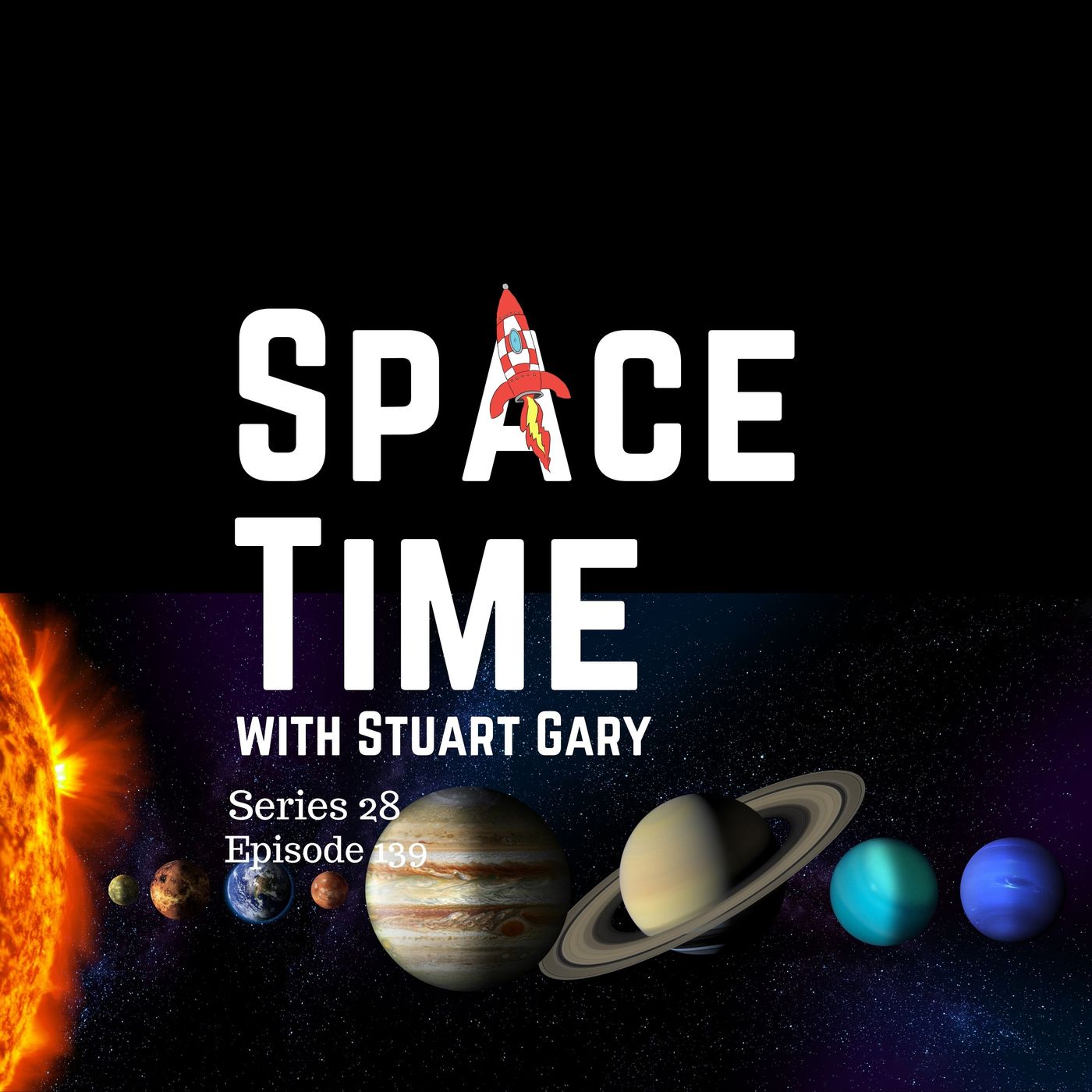
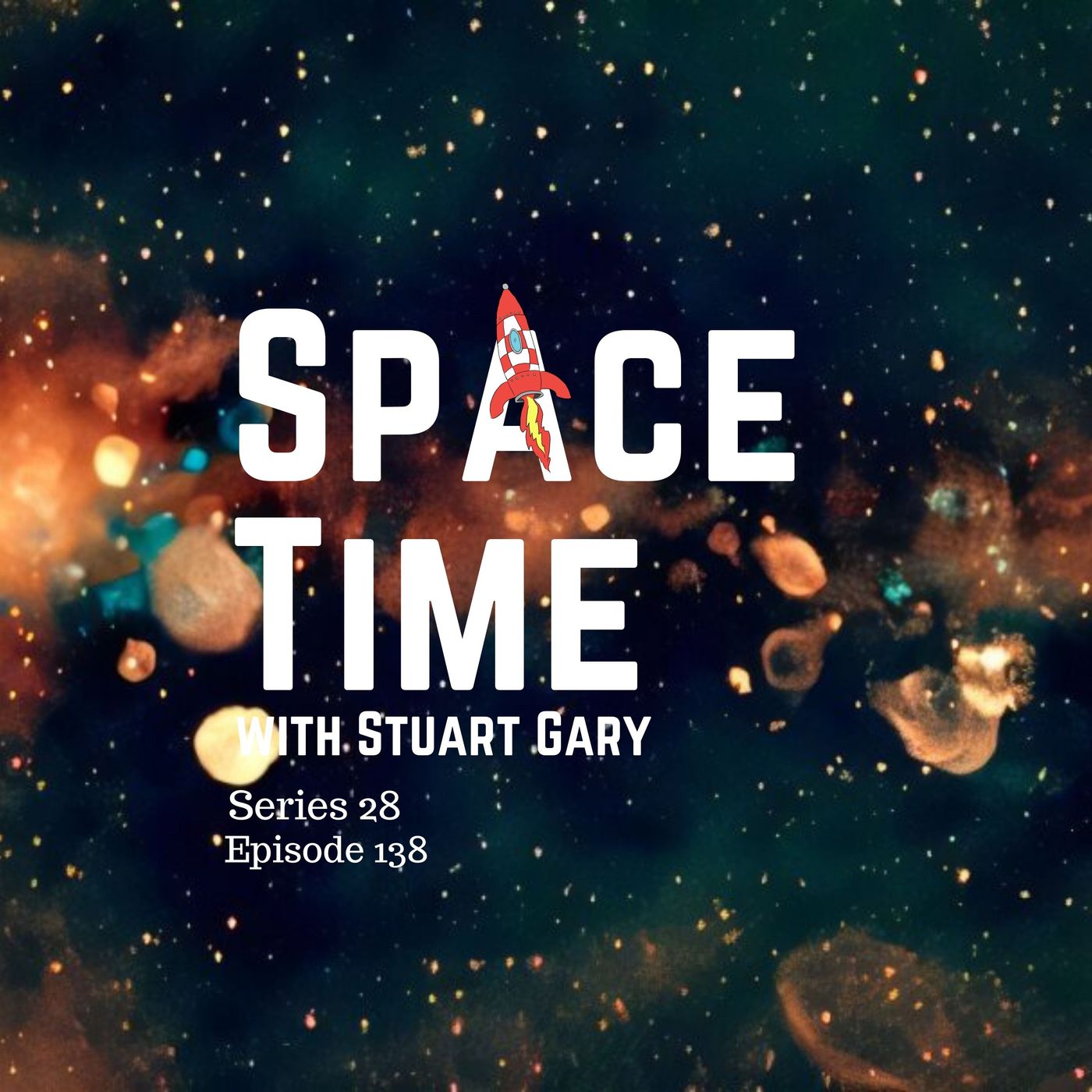
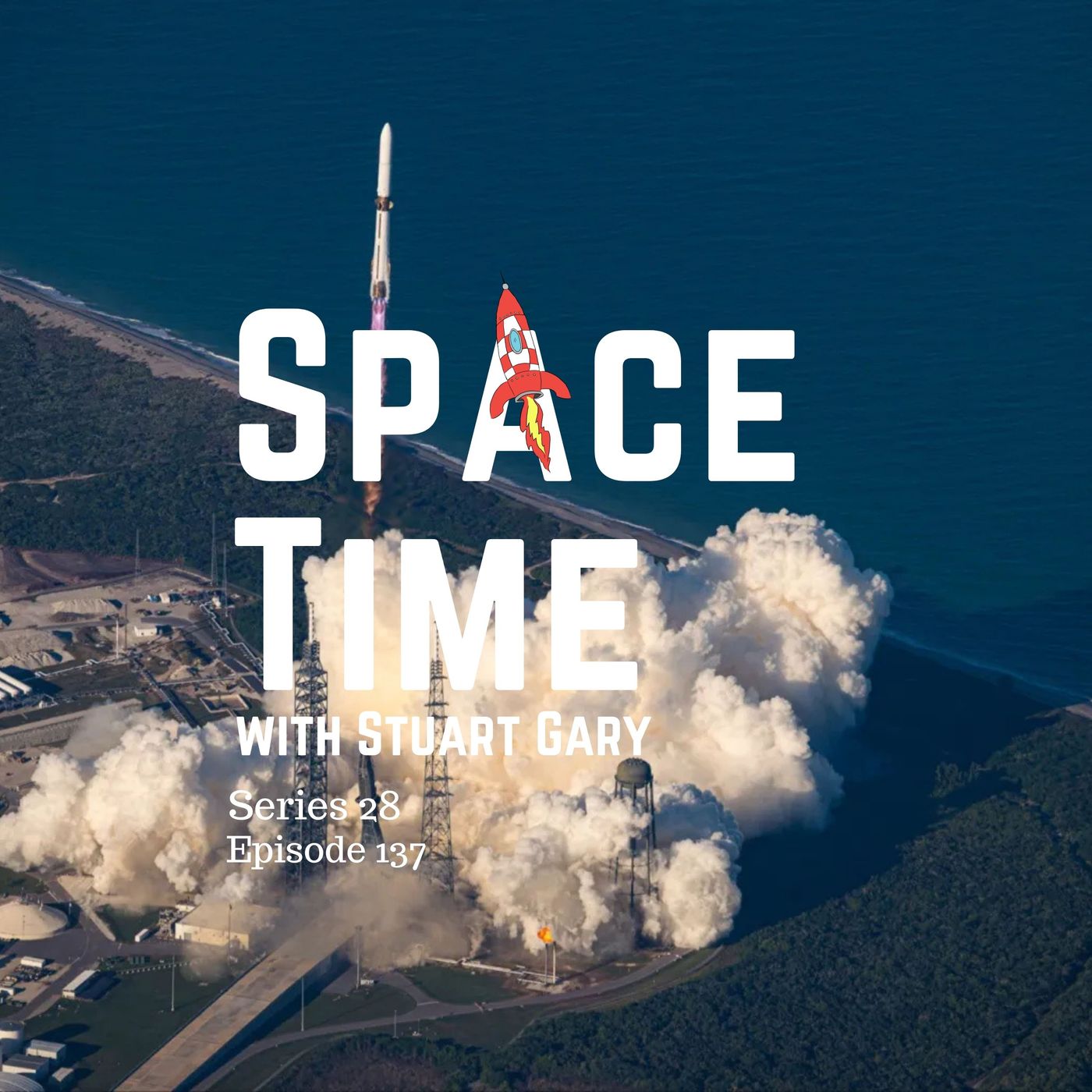

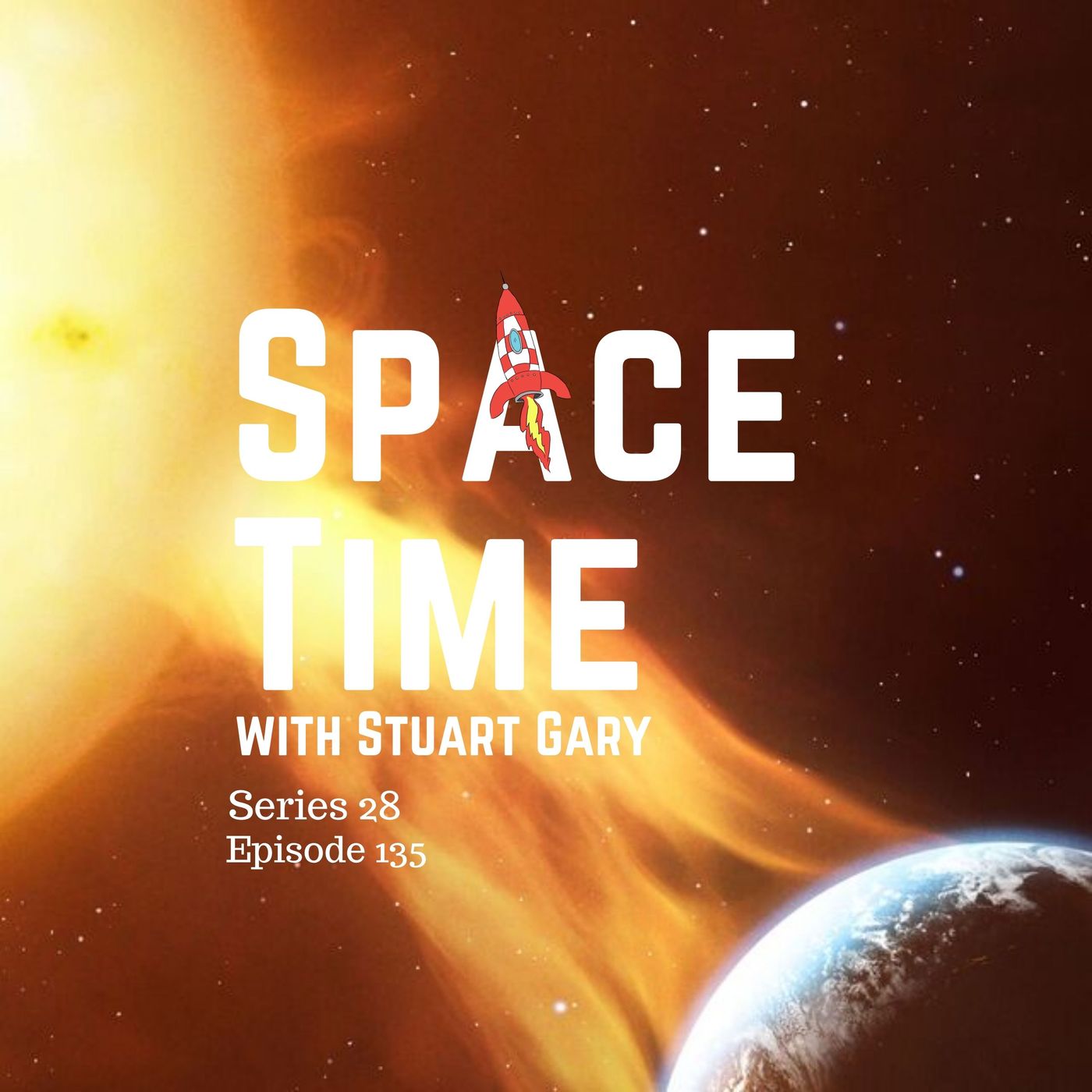

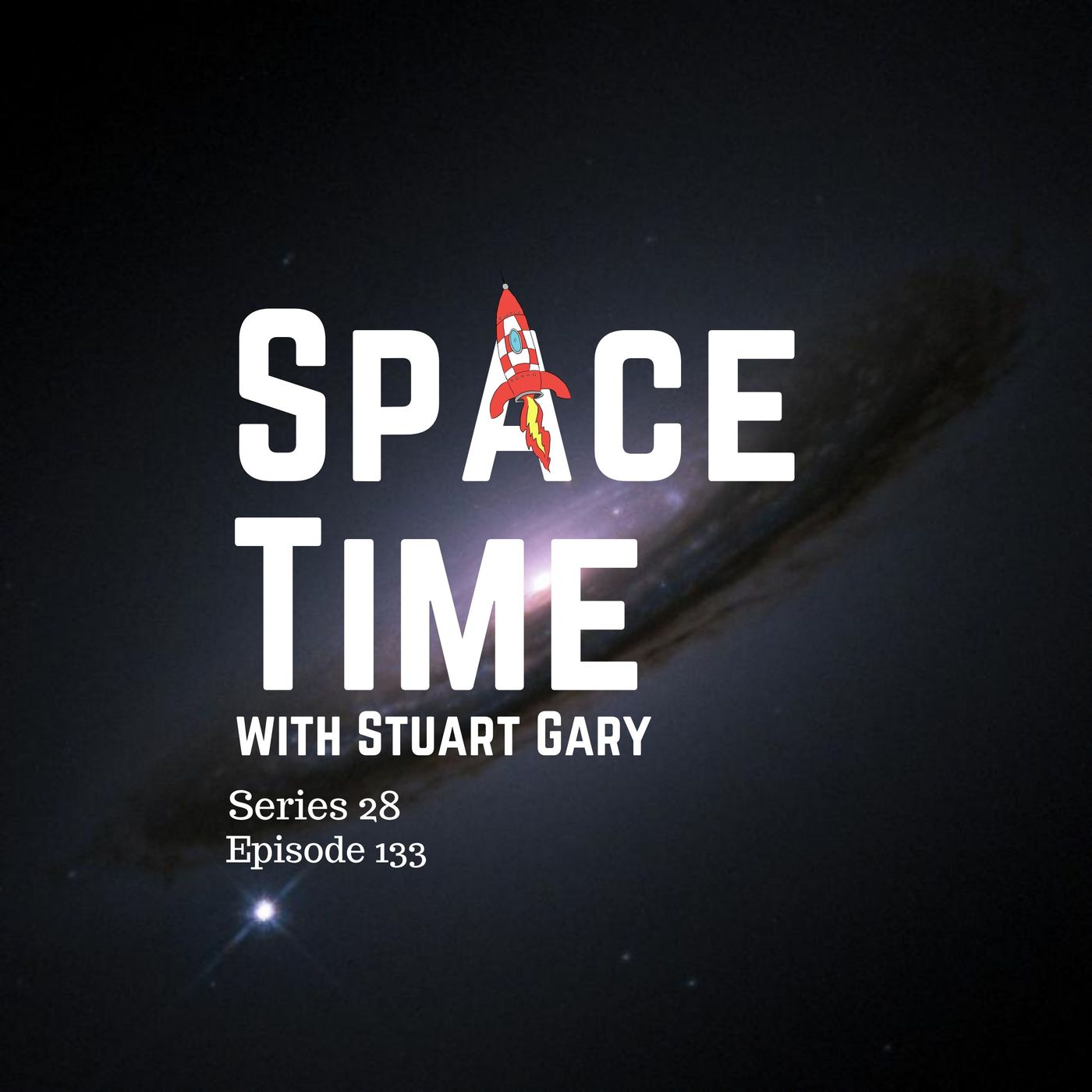
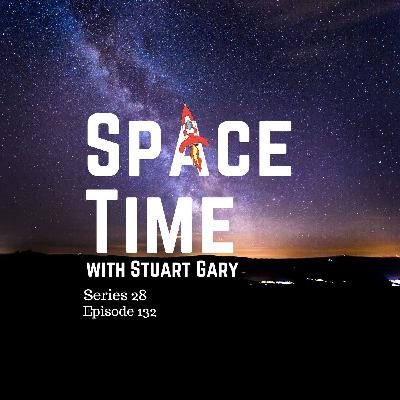


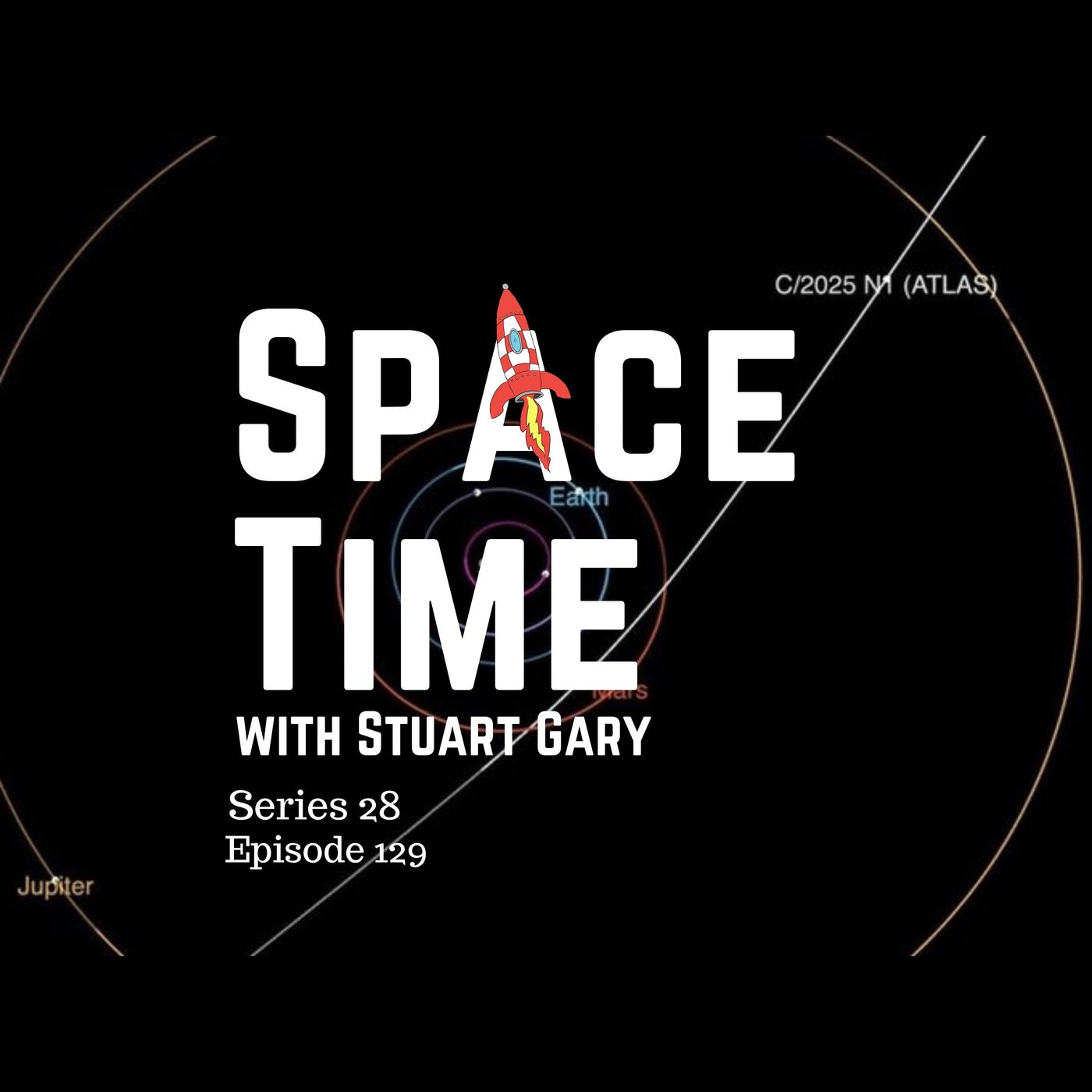



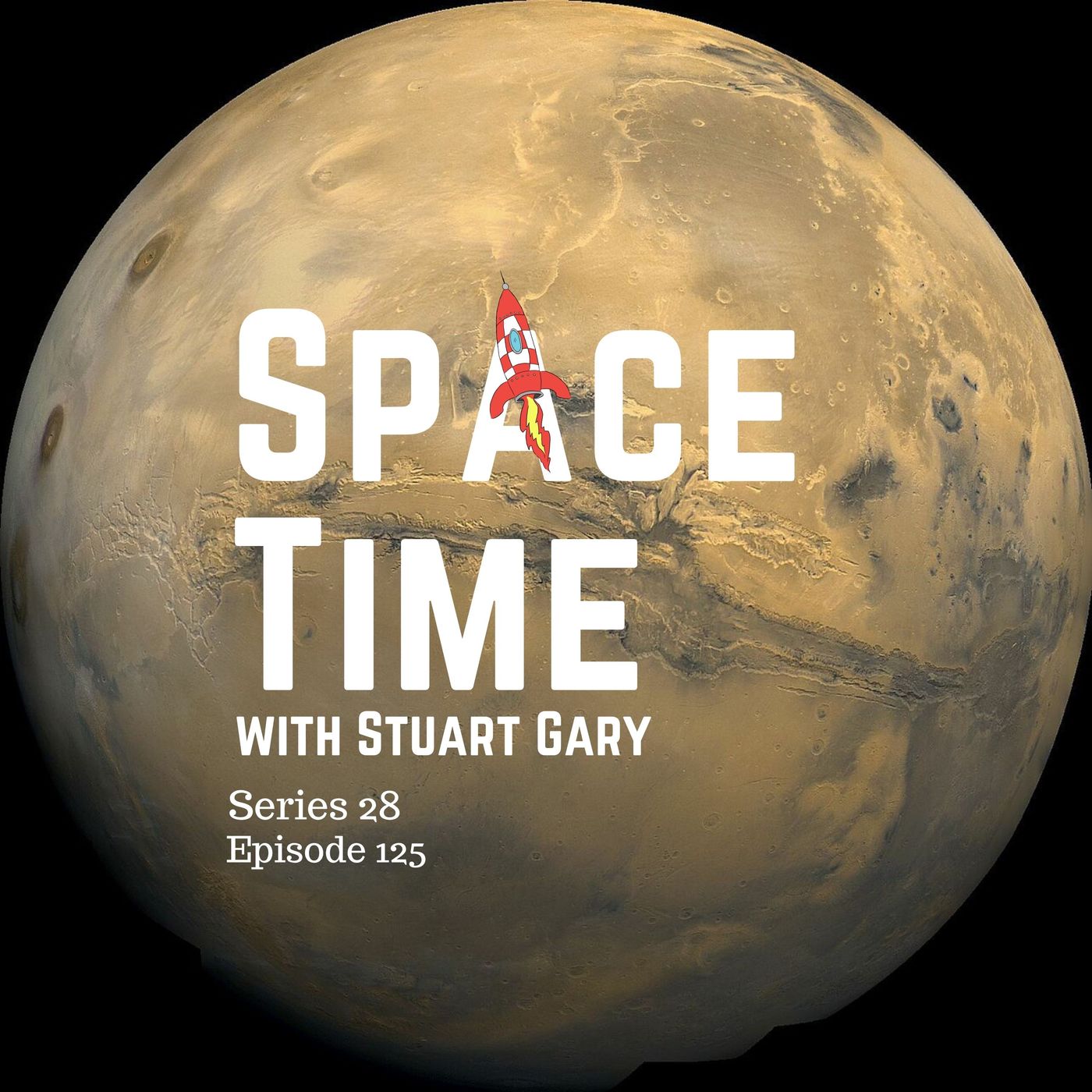
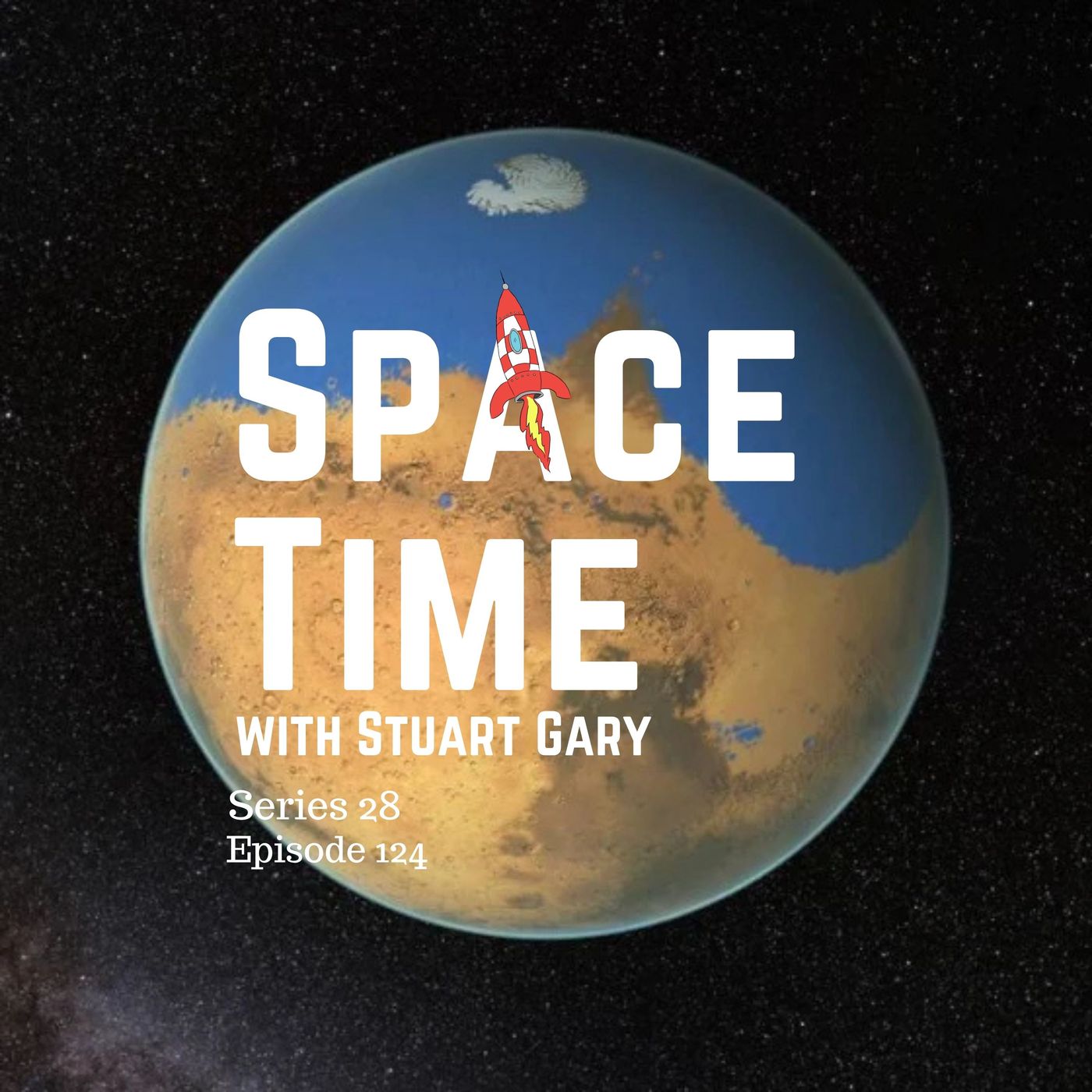



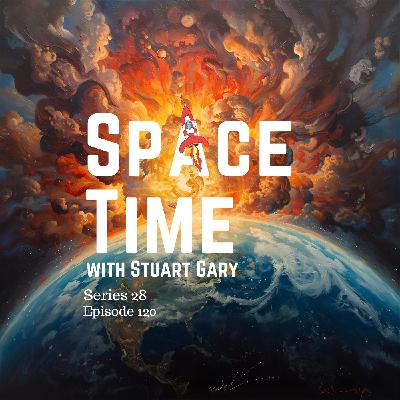



too many ads, duplicate ads, repetitive ads
duplicate ads that keep playing over and over again, may have to unsubscribe just because of the ads
i really don't want Microsoft looking at everything I do. it's not helpful to anyone but busy bodies.
if only scientists where as critical of capitalism or politics in general as of misinformation. it is more convenient to consider an enemy you can defeat, than one who makes possible your survival within the system. so scientists sound towards politics as they did towards religion when such was the dominant force. they hide their criticism so they can do their work, even though they do not believe in that system. it is not a system led by scientists, but by force of opinion.
The Australian Sceptic on this podcast is a misinformation and conspiracy nut, he thinks he is educating the audience with his insights and brilliant deductions. Gary should tell him to go away or stick to statistical proof provable facts without opinions
your idiotic, trump-ish Covid "science news" was bad enough now attacking young activists for their peers allegedly not wanting to eat a product that doesn't exist is next level. science smart you are definitely not. bye bye fool.
loved it
very informative , well done, I listen to every single one with great pleasure